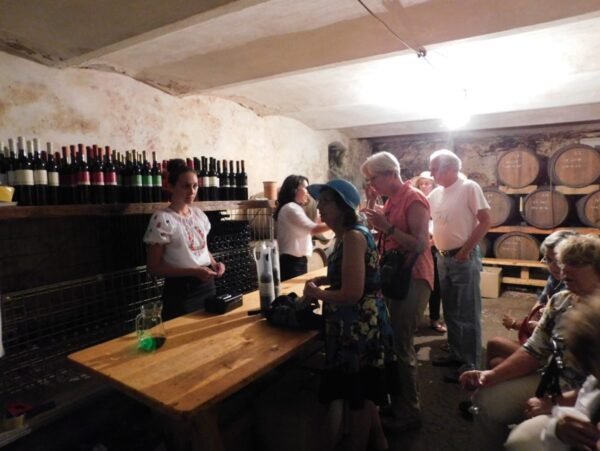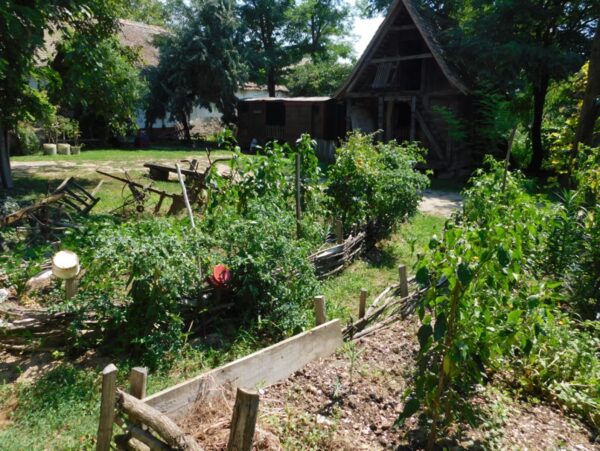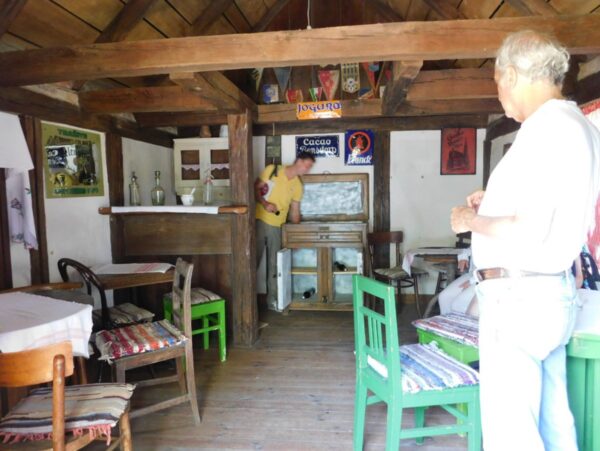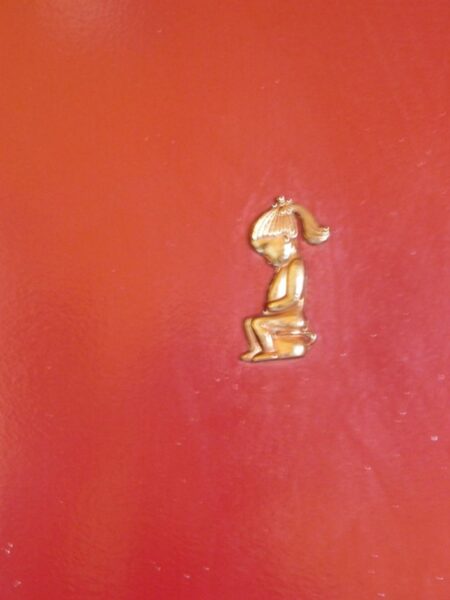A bottle of white, a bottle of red, perhaps a bottle of rosé instead?
Karanac might be small but the town sports two wineries. Of course, we visited one. An interesting characteristic that made this the best choice for at least some of us to visit is the family that operates the winery named Szabo. And if you search the internet for wineries in Karanac, theirs appears as SzabĂł – pincĂ©szet.
Here’s what’s interesting: If you’ve followed along you’ve noticed that when I write place names or personal names that are Croatian or Bosnian, I use the native spelling and that includes diacritic marks over certain consonants. However, when you look at SzabĂł – pincĂ©szet, the diacritics are above the vowels. The reason is simple. This family is of Hungarian heritage not Croatian.
Now, I hope you recall from my introduction to Slavonia that I wrote, “many consider Barajna both a part of and distinct from Slavonia.” The largest piece of the territory is still a part of Hungary and the Hungarians call it Baranya County. And, while the Croatians call this area Osijek-Baranja, the Hungarians refer to it as Drávaszög or Drava Corner. About 17 percent of the residents of Osijek-Baranja identify as Hungarian. So, intentionally or not, we had some exposure to this region’s duality.
When we arrived, two sisters greeted us at the door. One was Andrea and the other’s name was either Aleksandra or Anasztasiá. (Curse my memory if you must.) We went directly to the tasting room or as they call it in Croatian – Obiteljski Podrum where, after hearing a brief history of the family, the winery, and the different levels (the full range being from dry to very-sweet) and types (varietals) of wine they produce, we got down to business. Of course, the business was mostly wasted on me because my palate goes more to beer than wine. However, there was a wine produced from a white varietal called graševina that I enjoyed.
From the tasting room, we proceeded to the small wine cellar where a few in the group exchanged some kunas for bottles.

On the walk back to the restaurant, I noticed the Star of David on this building.

I never learned whether this was the home of a Jewish family or a synagogue of some sort. I couldn’t imagine there were ever enough Jews in the area to need a synagogue and, had there been enough, I would have expected it to be in Osijek which is a city of some size. Perhaps it was there for some reason beyond my limited speculation. Or, perhaps its shape is merely coincidental. Still, there it is in Karanac.
Croatian dining.
Although I don’t consider myself a vegetarian under even the broadest interpretation, I generally try to limit my intake of animal protein to once or twice a week. For me, this comes in the form of fish, fowl or seafood. I don’t eat mammals. After barely a week, I reached the conclusion that for Croatians, a meal without meat is a concept that borders on incomprehensibly alien. Thus, while everyone ate their traditional beef filled regional dish, I knew I would once again face a plate with chicken.
Lunch wasn’t quite ready when we returned to the restaurant so we visited the historical ethnic village that’s part of the Baranjska Kuća restaurant. It’s not quite fully restored but the intent is to recreate the village as it was in an earlier time. We had ample opportunity to explore it.


Those of us who needed to use the toilet in the restaurant were greeted by these images on the doors (shared because of my love of signs):.

and.

After lunch, we walked back to the Sklepić homestead where we said our goodbyes to Dennis, Goje, and Luna. We then boarded the bus for the three-hour ride to Croatia’s capital and by far its largest city, Zagreb.
My report on what we did upon our arrival begins in the next post.